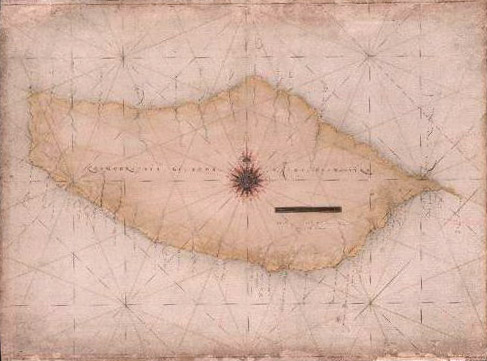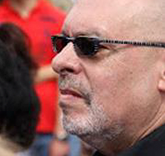History, wisdom and Arts - the Islands cercle and influence
The Zarco Academy of Arts, is part of a Cultural Project, regarding the promotion and exchange with the mediterranean crossing zone of influence, and Historic past and present. We mean Malta, in particular, The Tempra Academy for Contemporary Art, founded in London, in 1975, the Malta Arts Biennale, since 1995, as well as in Portugal with MIAB-portugal, Madeira International Art Biennale.
All these organizations, are linked and work together with Japan, IAPAJ Worldwide - International Association of Plastic Artists in Japan, is our far-east partner and full member of the main board. We intend to increase and develop regular Cultural Events on a mutual purpose to spread art, techcnics, styles and people.
A Brand new cercle ... A Fine Arts one moving from East to West and from West to Japan-Hong-Kong, Singapore, Malta, Madeira Islands towards the Atlantic till Cuba, the Southern America and Africa. Since the Phoenicians, Italians, Spanish and Portuguese developped, by sea, a whole cercle of navigation, discovery, trade and cultural expansion in a permanent exchange of peoples, cultures, ideas and dreams...
From Pacific to the Indian Ocean, the Red Sea we reach the Mediterranean Sea, where we keep the physical, cultural and spiritual cross roads in Malta.
North / South / East and West, as a mixed and continuous activity of sailing through the Islands, as reference points of living by the seas, with art and dreams... All over the World.
Manuel Martins Barata
Founder President
ZARCO HISTORY
João Gonçalves Zarco
 A statue of Zarco stands on the Avenida Arriaga, one the main streets in the Madeiran capital of Funchal.
A statue of Zarco stands on the Avenida Arriaga, one the main streets in the Madeiran capital of Funchal.
Born c. 1390
Kingdom of Portugal
Died 1471
Funchal
Nationality: Portuguese
Occupation: Explorer, colonial administrator
João Gonçalves Zarco (c.1390 - 21 November 1471)[1] was a Portuguese explorer who established settlements and recognition of the Madeira Islands, and was appointed first captain of Funchal by Henry the Navigator.
Zarco was born in Portugal, and became a knight at the service of Prince Henry the Navigator's household. In his service at an early age, Zarco commanded the caravels guarding the coast of Algarve from the incursions of the Moors, was at the conquest of Ceuta, and later led the caravels that recognized the island of Porto Santo in 1418 to 1419 and afterward, the island of Madeira 1419 to 1420. He founded the city of Câmara de Lobos. He was granted, as hereditary leader (Capitania), half the island of Madeira (the Capitania of Funchal, being its first Captain). Together with his fellow fleet commanders, Tristão Vaz Teixeira and Bartolomeu Perestrelo, he started the colonization of the islands in 1425. In his role of knight of Prince Henry the Navigator's house he participated in the siege of Tangier, in 1437, which ended in failure. He died at Funchal. The novel of Arkan Simaan, L'Écuyer d'Henri le Navigateur (Harmattan, Paris, 2007), deals with Zarco's life.
Ancestry and descendancy
His parents were Gonçalo Esteves Zarco and wife Brites de Santarém (daughter of João Afonso de Santarém (himself the son of Afonso Guilherme de Santarém, the son of Guilherme de Santarém, son of another Afonso Guilherme de Santarém) and wife Filipa Lopes de Couros, male line ancestors of Frei Luís de Sousa). His father was the son of Estêvão Pires Zarco, son of Pedro Esteves Zarco, son of Estêvão Gonçalves Zarco, son of Gonçalo ... Zarco.
He married Constança Rodrigues, daughter of Rodrigo Lopes de Sequeiros (?) and wife, and had:
João Gonçalves da Câmara (d. Funchal, Madeira, 26 March 1501), married to Dona Mécia de Noronha, daughter of Dom João Henriques de Noronha (bastard son of Alfonso, Count of Gijón and Noroña) and wife Beatriz, Lady de Mirabel and sister of Dom Garcia Henriques, and had issue, and also one bastard son by an unknown mother
Rui Gonçalves da Câmara, 3rd Donatary Captain of São Miguel Island, married to Maria de Bettencourt, natural daughter of Maciot de Bettencourt by Teguise, without issue, he had a bastard son by one Maria Rodrigues and three more children by an unknown mother Garcia Rodrigues da Câmara, married to Violante de Freitas, and had issue Beatriz Gonçalves da Câmara, married to Diogo Cabral, and had issue Isabel Gonçalves da Câmara, married to Diogo Afonso de Aguiar, o Velho (the Old), and had issue Helena Gonçalves da Câmara, married to Martim Mendes de Vasconcelos, and had issue Catarina Gonçalves da Câmara, married to Garcia Homem de Sousa.
HISTORY OF MADEIRA ISLANDS

Madeira in a 17th century map.
The history of Madeira begins with the discovery of the islands by Portugal in 1419.
Pre-Portuguese times
Pliny mentions certain Purple Islands, the position of which with reference to the Fortunate Islands or Canaries might seem to indicate Madeira islands. Plutarch (Sertorius, 75 AD) referring to the military commander Quintus Sertorius (d. 72 BC), relates that after his return to Cádiz, "he met seamen recently arrived from Atlantic islands, two in number, divided from one another only by a narrow channel and distant from the coast of Africa 10,000 furlongs. They are called Isles of the Blest." The estimated distance from Africa, and the closeness of the two islands, seem to indicate Madeira and Porto Santo.
There is a romantic tale about two lovers, Robert Machim and Anna d'Arfet in time of the King Edward III of England, fleeing from England to France in 1346, were driven off their course by a violent storm, and cast on the coast of Madeira at the place subsequently named Machico, in memory of one of them. On the evidence of a portolan dated 1351, preserved at Florence, Italy, it would appear that Madeira had been discovered long before that date by Portuguese vessels under Genoese captains.
Portuguese Madeira
 However, in time grain production began to fall. To get past the ensuing crisis Henry decided to order the planting of sugarcane - rare in Europe and, therefore, considered a spice - promoting, for this, the introduction of Sicilian beets as the first specialized plant and the technology of its agriculture. Sugarcane production became a leading factor in the island's economy, and increased the demand for labour. Genoese and Portuguese traders were attracted to the islands. Sugarcane cultivation and the sugar production industry developed until the 17th century.
However, in time grain production began to fall. To get past the ensuing crisis Henry decided to order the planting of sugarcane - rare in Europe and, therefore, considered a spice - promoting, for this, the introduction of Sicilian beets as the first specialized plant and the technology of its agriculture. Sugarcane production became a leading factor in the island's economy, and increased the demand for labour. Genoese and Portuguese traders were attracted to the islands. Sugarcane cultivation and the sugar production industry developed until the 17th century.
Since the 17th century, Madeira's most important product has been its wine, sugar production having since moved on to Brazil, São Tomé and Príncipe, and elsewhere. Madeira wine was perhaps the most popular luxury beverage in the colonial Western Hemisphere during the 17th and 18th centuries. The British Empire occupied Madeira as a result of the Napoleonic Wars, a friendly occupation which concluded in 1814 when the island was returned to Portugal, and the British did much to popularise Madeira wine.
When, after the death of king John VI of Portugal, his usurper son Miguel of Portugal seized power from the rightful heir, his niece Maria II, and proclaimed himself 'Absolute King', Madeira held out for the Queen under the governor José Travassos Valdez until Miguel sent an expeditionary force and the defence of the island was overwhelmed by crushing force. Valdez was forced to flee to England under the protection of the Royal Navy (September 1828).
In 1891 a census revealed the population on Madeira to be 132,223 inhabitants.
MALTA HISTORY
Etymology
The origin of the term Malta is uncertain, and the modern-day variation derives from the Maltese language. The most common etymology is that the word Malta derives from the Greek word μέλι (meli), "honey". The Greeks called the island Μελίτη (Melitē) meaning "honey-sweet" (which was also the name of a Nereid), possibly due to Malta's unique production of honey; an endemic species of bee lives on the island, giving it the popular nickname the "land of honey". The Romans went on to call the island Melita, which is the latinisation of the Greek Μελίτη. Another theory suggests that the word Malta comes from the Phoenician word Maleth meaning "a haven" in reference to Malta's many bays and coves. The current term Malta was introduced during the Kingdom of Sicily period.

History
History of Malta and Timeline of Maltese history
Prehistory
Megalithic Temples of Malta, Hypogeum of Ħal Saflieni, Għar Dalam, and Heritage Group Malta
Prehistoric pygmy elephant, discovered in Għar Dalam
Pottery found by archaeologists at Skorba resembles that found in Italy, and suggests that the Maltese islands were first settled in 5200 BC mainly by stone age hunters or farmers who had arrived from the larger island of Sicily, possibly the Sicani. The extinction of the dwarf hippos and dwarf elephants has been linked to the earliest arrival of humans on Malta. Prehistoric farming settlements dating to Early Neolithic period were discovered in open areas and also in caves, such as Għar Dalam.
The Sicani were the only tribe known to have inhabited the island at this time and are generally regarded as related to the Iberians. The population on Malta grew cereals, raised domestic livestock and, in common with other ancient Mediterranean cultures, worshiped a fertility figure represented in Maltese prehistoric artefacts as exhibiting the large proportions seen in similar statuettes, including the Venus of Willendorf.
JAPAN HISTORY
 Legend attributes the creation of Japan to the sun goddess, from whom the emperors were descended. The first of them was Jimmu, supposed to have ascended the throne in 660 B.C. , a tradition that constituted official doctrine until 1945.
Legend attributes the creation of Japan to the sun goddess, from whom the emperors were descended. The first of them was Jimmu, supposed to have ascended the throne in 660 B.C. , a tradition that constituted official doctrine until 1945.
Recorded Japanese history begins in approximately A.D. 400, when the Yamato clan, eventually based in Kyoto, managed to gain control of other family groups in central and western Japan. Contact with Korea introduced Buddhism to Japan at about this time. Through the 700s Japan was much influenced by China, and the Yamato clan set up an imperial court similar to that of China. In the ensuing centuries, the authority of the imperial court was undermined as powerful gentry families vied for control.
At the same time, warrior clans were rising to prominence as a distinct class known as samurai. In 1192, the Minamoto clan set up a military government under their leader, Yoritomo. He was designated shogun (military dictator). For the following 700 years, shoguns from a succession of clans ruled in Japan, while the imperial court existed in relative obscurity.
First contact with the West came in about 1542, when a Portuguese ship off course arrived in Japanese waters. Portuguese traders, Jesuit missionaries, and Spanish, Dutch, and English traders followed. Suspicious of Christianity and of Portuguese support of a local Japanese revolt, the shoguns of the Tokugawa period (1603–1867) prohibited all trade with foreign countries; only a Dutch trading post at Nagasaki was permitted. Western attempts to renew trading relations failed until 1853, when Commodore Matthew Perry sailed an American fleet into Tokyo Bay. Trade with the West was forced upon Japan under terms less than favorable to the Japanese. Strife caused by these actions brought down the feudal world of the shoguns. In 1868, the emperor Meiji came to the throne, and the shogun system was abolished.

